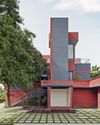
Today, cities worldwide including India are facing intense pressure to fulfil the ever-increasing needs of their growing populations. Over 67% of the global population will be living in cities by 2050, according to the UN World Urbanisation Prospects. In fact, India’s urban population will rise from 34% in 2017 to 40% by 2030, according to a World Bank study.
Over the last few decades, cities in India and around the world have been grappling with their rising populace by replicating the traditional American urban development patterns—motorcentric cities with segregated land-use zones that cause disconnected and fractured urban expansion, with places of working, living and recreation located in completely different parts of the city.
Over the years, these growth patterns in cities have led to several issues, such as:
● Decreased productivity in citizens due to increased commute time
● High dependency on personal motorised vehicles and consequently, fossil fuels
● Traffic congestion and air pollution
● Threatened ecology
● Rise in socio-spatial inequalities
These problems are evidenced by some of the largest metropolises in the world—from the infamously long commute hours in New York to the much-debated air quality of New Delhi to the skyhigh real estate prices in Tokyo leading to a dearth of affordable homes. A critical thing I would like to emphasise here is that people’s lives are inseparable from the cities they reside in. Urban sprawl and the issues thereof, also have significant negative implications for people’s mental and physical health.
Esta historia es de la edición June 2023 de Architecture + Design.
Comience su prueba gratuita de Magzter GOLD de 7 días para acceder a miles de historias premium seleccionadas y a más de 9,000 revistas y periódicos.
Ya eres suscriptor ? Conectar
Esta historia es de la edición June 2023 de Architecture + Design.
Comience su prueba gratuita de Magzter GOLD de 7 días para acceder a miles de historias premium seleccionadas y a más de 9,000 revistas y periódicos.
Ya eres suscriptor? Conectar

A GRECIAN RETREAT
Shimona Bhansali imbues a subtle touch of opulence to this home in Mumbai

A BOLD STATEMENT
Dhampur Sugar Mills Limited's workspace in New Delhi designed and built by Officebanao adopts an industrial narrative

A BREATH OF FRAGRANT DESIGN IN DELHI'S HEART
An office that smells like perfumery; that is the vision that TWI brought to life in this office space designed for an acclaimed perfume company in India

MASTER OF ALL TRADES
The ethos of forward-thinking and ingenuity finds its architectural counterpart within the walls of Nikhil Kamath and Abhijeet Pai's office-a vision of organic design infused with the essence of India

A TOUCH OF OPULENCE
Designed by Aparna Kaushik, this Delhi office displays an interesting balance of classic aesthetics and contemporary sensibilities

THE WOODEN WONDERLAND
Priyanka and Piyush Mehra envision a stunning experience centre for Vikas Plywood

THE HUB: BUILDING COMMUNITIES
Studio Lotus designs a dynamic mixed-use community hub that activates Chennai's largest IT Park

THE WINNER'S PERCH
Baldiwala Edge designs a Singapore-based ship broker's office as a torch collector's paradise, offering a 360-degree bird's-eye view of the Mumbai skyline

THE DIRECTOR'S CABIN
Designed by Envisage, this office gives a new definition to the traditional notion of biophilia

Designing Corporate India
From weaving the magic of a Star Trek-themed command centre to crafting bespoke block-printed workstations, Vijaya Bhargav and Arnab Ghosh-the trailblazing co-founders of Ostraca-have astonishingly transformed a staggering 29 million square feet of office space for India's tech giants and global enterprises-all while maintaining a flat hierarchical company culture-fuelling a master class in corporate design